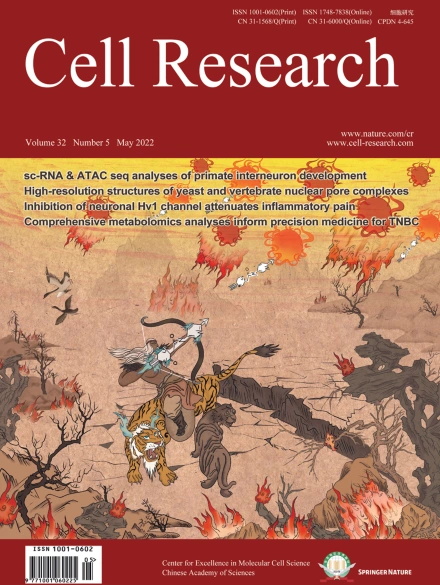
Advanced Search
Submit Manuscript
Advanced Search
Submit Manuscript
Volume 32, No 5, May 2022
ISSN: 1001-0602
EISSN: 1748-7838 2018
impact factor 17.848*
(Clarivate Analytics, 2019)
Volume 32 Issue 5, May 2022: 477-490 |
Comprehensive metabolomics expands precision medicine for triple-negative breast cancer
Yi Xiao1,† , Ding Ma1,† , Yun-Song Yang1,2,† , Fan Yang1,† , Jia-Han Ding1 , Yue Gong1 , Lin Jiang1 , Li-Ping Ge1 , Song-Yang Wu1 , Qiang Yu1 , Qing Zhang3 , François Bertucci4 , Qiuzhuang Sun5 , Xin Hu1 , Da-Qiang Li1 , Zhi-Ming Shao1,* , Yi-Zhou Jiang1,*
1Key Laboratory of Breast Cancer in Shanghai, Department of Breast Surgery, Fudan University Shanghai Cancer Center; Department of Oncology, Shanghai Medical College, Fudan University, Shanghai, ChinaMetabolic reprogramming is a hallmark of cancer. However, systematic characterizations of metabolites in triple-negative breast cancer (TNBC) are still lacking. Our study profiled the polar metabolome and lipidome in 330 TNBC samples and 149 paired normal breast tissues to construct a large metabolomic atlas of TNBC. Combining with previously established transcriptomic and genomic data of the same cohort, we conducted a comprehensive analysis linking TNBC metabolome to genomics. Our study classified TNBCs into three distinct metabolomic subgroups: C1, characterized by the enrichment of ceramides and fatty acids; C2, featured with the upregulation of metabolites related to oxidation reaction and glycosyl transfer; and C3, having the lowest level of metabolic dysregulation. Based on this newly developed metabolomic dataset, we refined previous TNBC transcriptomic subtypes and identified some crucial subtype-specific metabolites as potential therapeutic targets. The transcriptomic luminal androgen receptor (LAR) subtype overlapped with metabolomic C1 subtype. Experiments on patient-derived organoid and xenograft models indicate that targeting sphingosine-1-phosphate (S1P), an intermediate of the ceramide pathway, is a promising therapy for LAR tumors. Moreover, the transcriptomic basal-like immune-suppressed (BLIS) subtype contained two prognostic metabolomic subgroups (C2 and C3), which could be distinguished through machine-learning methods. We show that N-acetyl-aspartyl-glutamate is a crucial tumor-promoting metabolite and potential therapeutic target for high-risk BLIS tumors. Together, our study reveals the clinical significance of TNBC metabolomics, which can not only optimize the transcriptomic subtyping system, but also suggest novel therapeutic targets. This metabolomic dataset can serve as a useful public resource to promote precision treatment of TNBC.
https://doi.org/10.1038/s41422-022-00614-0